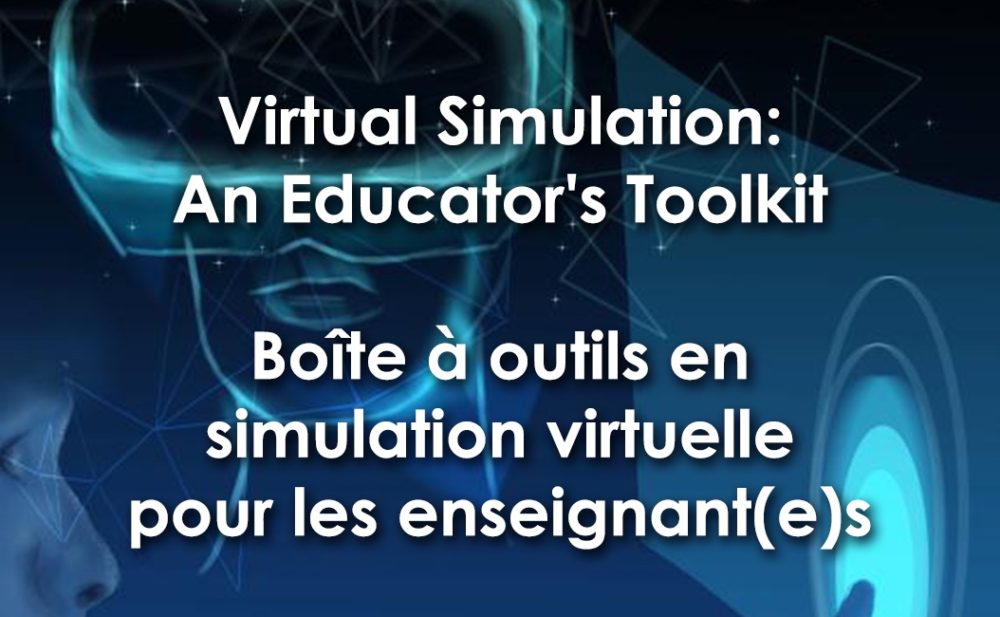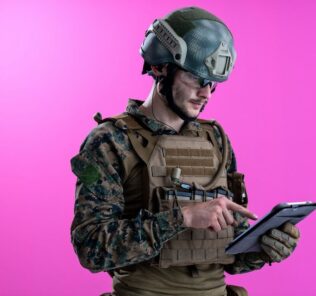Freely Available Virtual Simulation Educator’s Toolkit
As the world’s premier Healthcare Simulation resource website, HealthySimulation.com is dedicated to bringing clinical simulation educators tools that they can use to improve their quality of instruction. One such tool, “Virtual Simulation: An Educator’s Toolkit,” was written by Margaret Verkuyl, Karyn Taplay, Lynda Atack, Mélanie Boulet, Nicole Dubois, Sandra Goldsworthy, Theresa Merwin, Timothy Willett, and Treva Job. In this article, HealthySimulation.com interviews author Margaret Verkuyl about why this resource was created, and how medical simulation educators can use the book to increase academic instruction across the field.
HealthySimulation.com: What inspired your team to develop this toolkit?
Margaret Verkuyl: Before the pandemic, we started using virtual experiences. Innovative educators were using it, but during the pandemic, it became a lifeline for healthcare courses to have virtual simulations because students couldn’t go to clinical. We did realize when we started using virtual simulation before the pandemic, that there was no clear set of guidelines on how to use it, and we didn’t have best practices or anything like that, so we did a lot of trial and error research.
Sponsored Content:
Then, when the pandemic happened, it turned out that not just simulationists were using virtual simulation, but rather faculty, clinical instructors, lab instructors, faculty taught theory, and practice settings, were all using virtual simulations. However, they didn’t have much education or knowledge of how to do it. Therefore, we created this toolkit for different ways to embed healthcare simulations into education
HealthySimulation.com: How did your team go about structuring the toolkit and its breakdown?
Margaret Verkuyl: When we created the toolkit, we actually did surveys of educators on what they needed. We completed a literature review to determine what should be in this toolkit and how it should be organized. Then, a team of about 21 of us who had clinical simulation experience broke it down into different areas that were important. We tried to make it granular.
If you wanted just a briefing, you could go to “debriefing” and you didn’t have to start at the very beginning of the book. You could take what you needed in bite-size chunks. As we developed the content, we began to peer review it. Then we ended up at the very end sending it out. We did a research study, and sent it out to 19 simulationists, either in higher education or practice to review it and give us feedback. They had to have some virtual simulation experience, but not excessively. We got feedback and made changes.
Sponsored Content:
HealthySimulation.com: When putting the book together, was there anything that stuck out to you especially surprising?
Margaret Verkuyl: When we went through the literature review and our survey of people using virtual simulation, there was a thought that all you have to do is send students the link, the learners get the link, they play the virtual simulation, they learn and you’re done. You don’t have to do anything else. We realized that many people didn’t embed the clinical simulation pedagogy of pre-brief and enactment and debrief and evaluation. We needed to be able to talk about those different areas and how educators would use them, given that it’s a virtual simulation. For example, what are the nuances when it’s a virtual simulation, as opposed to an in-person simulation?
Check out this HealthySimulation.com Webinar – An Open Educational Resource on Virtual Simulation: A Free Educator’s Toolkit: Presented by Margaret Verkuyl, NP:PHC, MN, this one-hour, intermediate webinar covers how the use of virtual simulation in clinical education is expanding, and how you can use this open-access resource to better build your sim program.
HealthySimulation.com: Where do you see the future of virtual simulation headed based on your findings?
Margaret Verkuyl: Based on our findings, virtual simulation is here to stay. It’s not going anywhere, and we see that more and more educators will use it. Anyone can use it, and it can be used by so many different people. As a result, the professional development that’s needed for faculty on a wide scale is huge post-pandemic because they’ve used it already in the pandemic time and realized there are advantages to it. They also realize that, while students noted the advantages of using virtual simulation, they don’t want all virtual simulations. They don’t want only virtual simulation, but they see definite advantages.
HealthySimulation.com: Who would you recommend review this toolkit?
Margaret Verkuyl: Educators that are using virtual simulation, whether you are in practice or you are in higher education. Wherever you are using this virtual simulation, even if you’ve used virtual simulation in the past and you’ve used simulation pedagogy, there are so many different nuances that you might not have thought about for using virtual simulation to enhance psychological safety (or different ways of doing it). Virtual simulation can be an independent asynchronous activity, an in-person activity, or a small or large group activity. There are so many different ways. If you’re not there watching someone play or participating with them while they’re playing the virtual simulation, then how do you debrief it? What are your debriefing options related to that simulation?
HealthySimulation.com: Anything else you would like to add?
Margaret Verkuyl: I want people to know that this process was fairly rigorous. We did surveys across Canada of simulationists on what they needed for virtual simulation. There was also another survey that had been done a couple of months before that where we drew on with nurses using virtual simulation, what they felt was missing related to their knowledge and understanding of what they still needed, and the tools they still needed for virtual simulation. We did a literature review of what literature is out there on how to embed virtual simulation in education. Then we wrote up the different chapters and we did it using a team that was known for creating interactive and visually pleasing online content. In the end, we did a research study with 19 simulationists reviewing the virtual SIM, the toolkit, and giving us feedback.
More About the Virtual Simulation Educator’s Toolkit
This open-access textbook was developed as a resource to help educators and simulationists use virtual simulations with learners in all educational settings. It is designed to highlight key concepts related to educator preparation, prebrief, enactment, debrief and evaluation stages required for providing an effective virtual simulation learning experience.
The foundational information in this e-textbook will benefit any educator who is using virtual simulation in a course, lab, clinical setting or to augment clinical practice. Additionally, this book includes interactive content and videos and is, therefore, best viewed using the online press books format. The book can also be downloaded in a pdf format.
This project is made possible with funding from the Government of Ontario and the Virtual Learning Strategy.
Learn More About the Virtual Simulation Educator’s Toolkit
Lance Baily, BA, EMT-B, is the Founder & CEO of HealthySimulation.com, which he started while serving as the Director of the Nevada System of Higher Education’s Clinical Simulation Center of Las Vegas back in 2010. Lance is also the Founder and acting Advisor to the Board of SimGHOSTS.org, the world’s only non-profit organization dedicated to supporting professionals operating healthcare simulation technologies. His co-edited Book: “Comprehensive Healthcare Simulation: Operations, Technology, and Innovative Practice” is cited as a key source for professional certification in the industry. Lance’s background also includes serving as a Simulation Technology Specialist for the LA Community College District, EMS fire fighting, Hollywood movie production, rescue diving, and global travel. He and his wife Abigail Baily, PhD live in Las Vegas, Nevada with their two amazing daughters.
Sponsored Content:




















